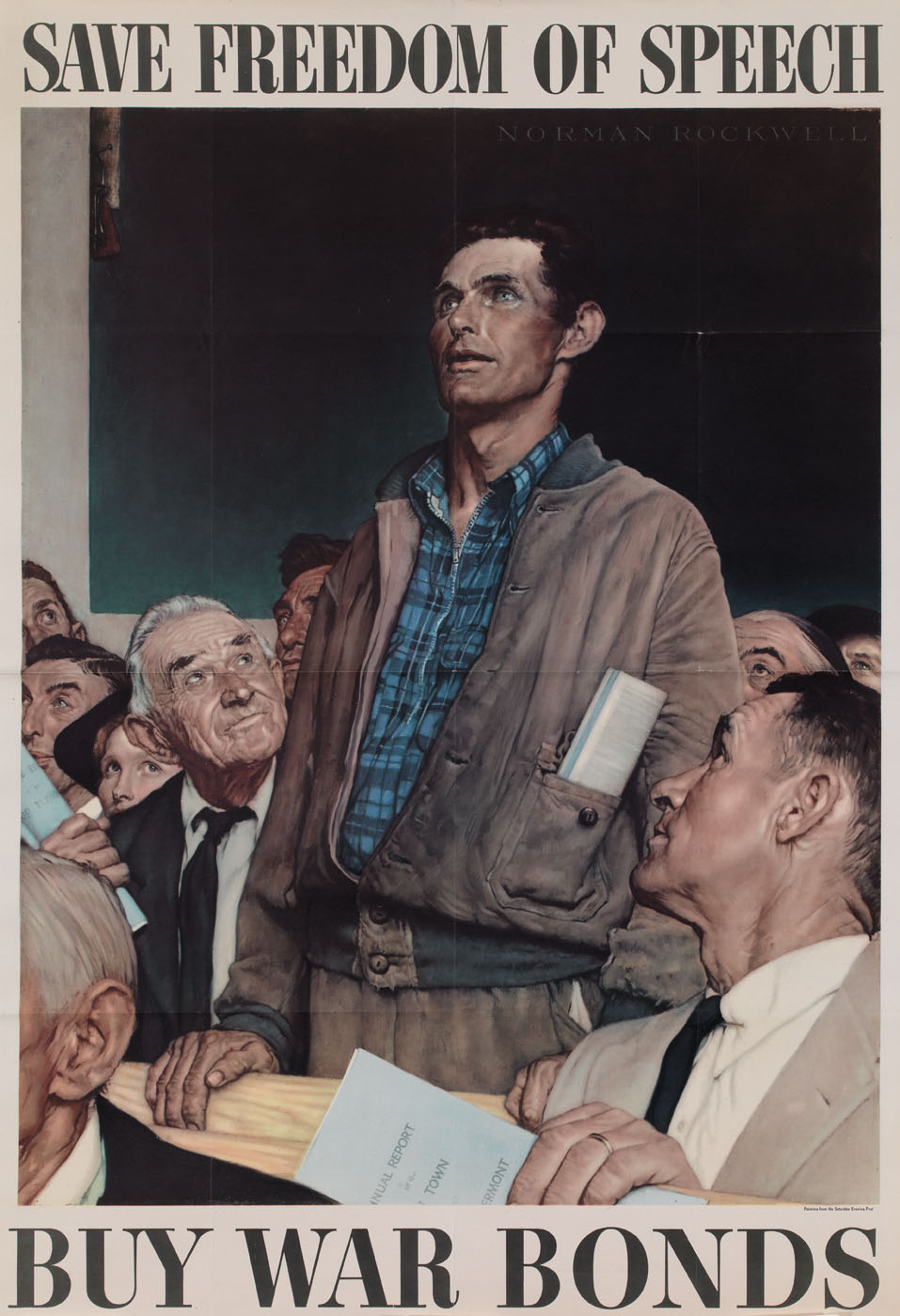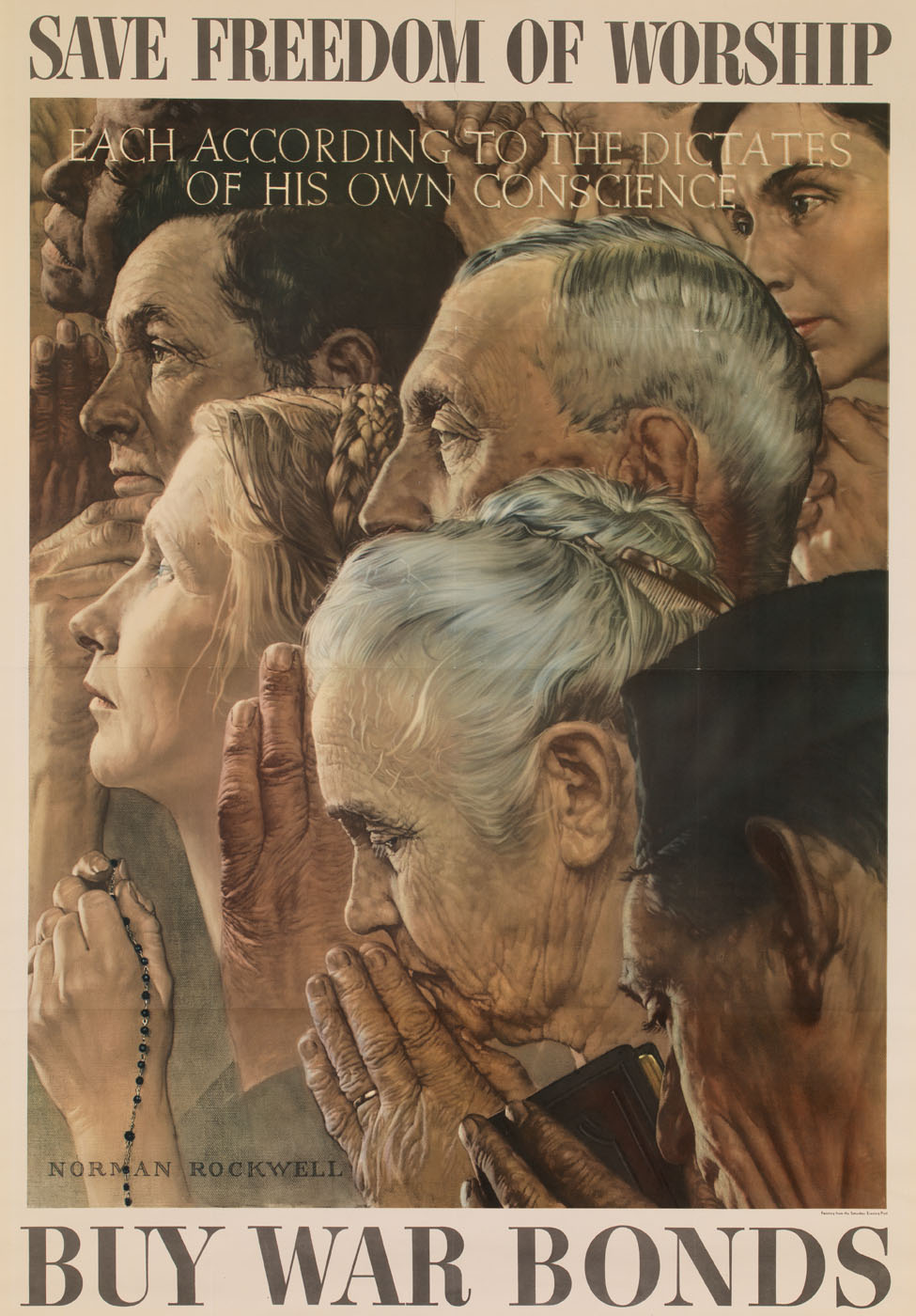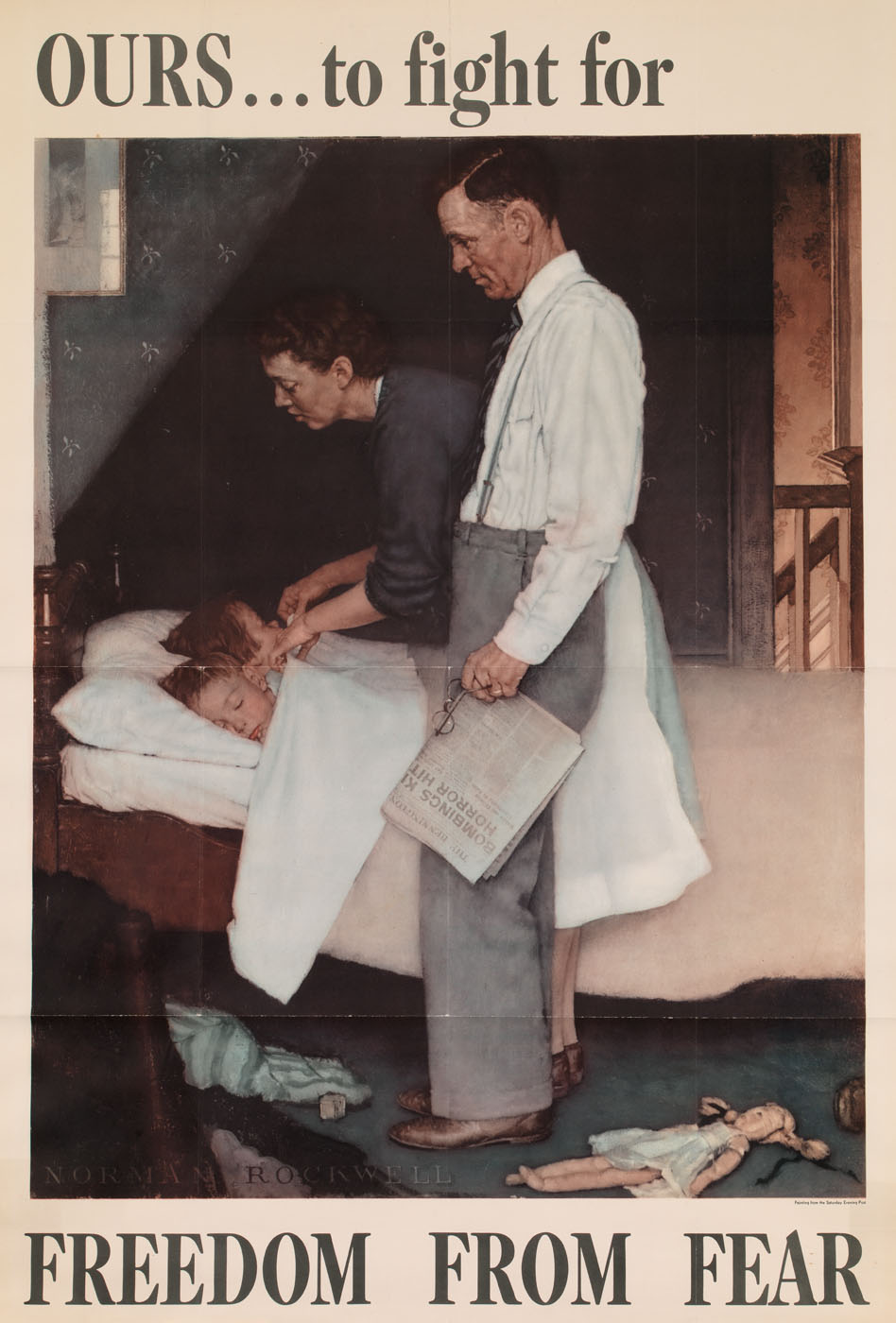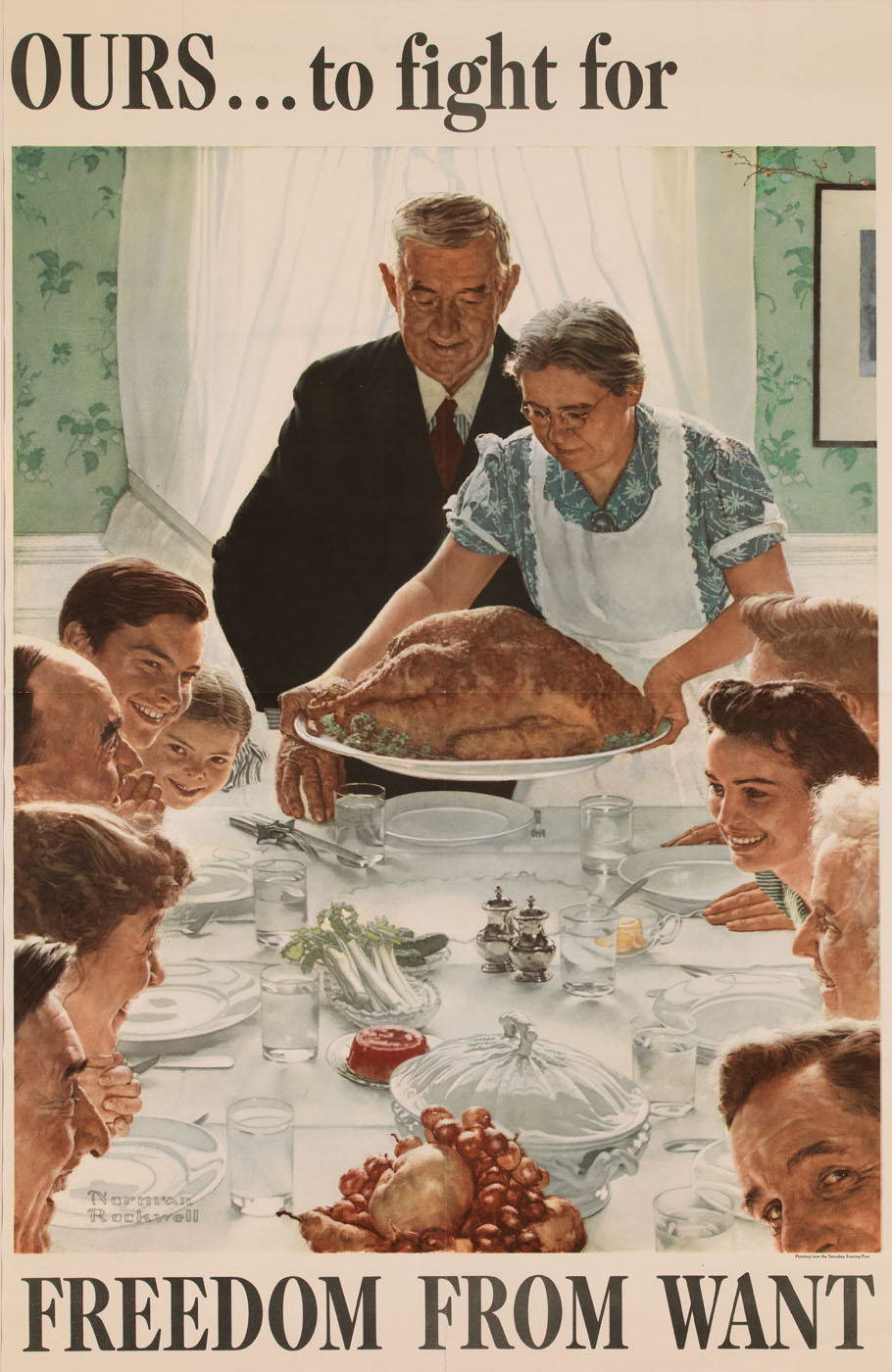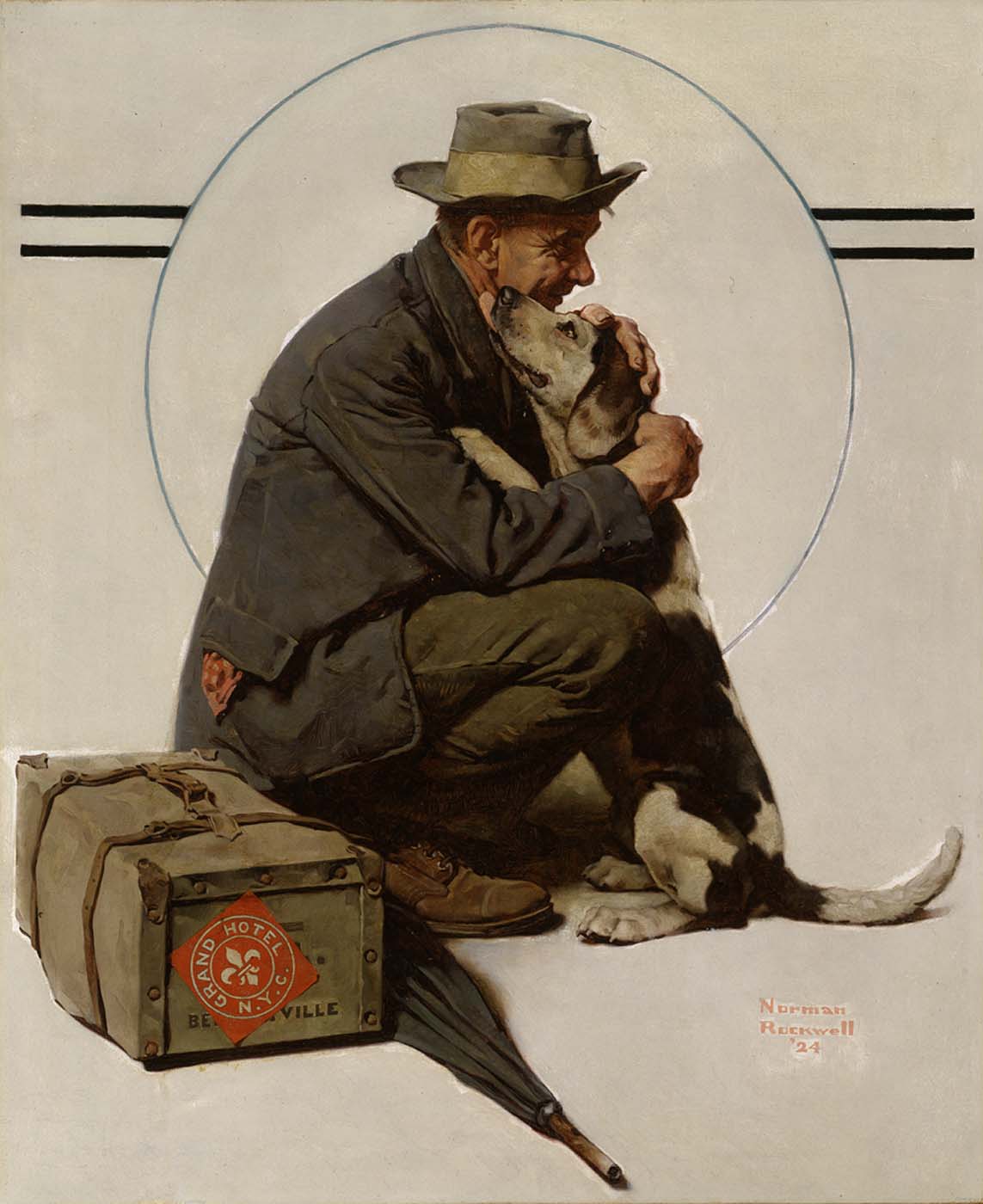Norman Rockwell
The approach to Rockwell's home in Arlington, Vermont, where he lived from 1939 until he moved to Stockbridge, Massachusetts, was accented by a covered bridge built in 1852. Thus, a rural past, and the emblems of small-town life that appear in many of his paintings, were never far from his easel. In fact, his Arlington neighbors posed for Freedom of Speech, the best known of his "Four Freedoms" paintings. Knowing this, one might assume that Rockwell's New England paintings are close copies of life in Arlington (or Stockbridge), but that was not the case. Rockwell was, as his many self-portraits reveal, a great believer in deception. With unerring skill, he recast major national events to play on a traditional small-town stage, thus toning down the more disturbing aspects of the depression, World War II, rapid urbanization, integration, and the numerous social changes that followed. But that enabled Rockwell, who saw himself as an illustrator, to address a much wider audience.
Born in New York, into a family that could offer him little support, Rockwell left high school in his sophomore year to enroll at the Art Students League. Seven years later he painted his first Saturday Evening Post cover, which launched a remarkable career, much of which (the next forty-seven years) was devoted to painting more Post covers.
William H. Truettner and Roger B. Stein, editors, with contributions by Dona Brown, Thomas Andrew Denenberg, Judith K. Maxwell, Stephen Nissenbaum, Bruce Robertson, Roger B. Stein, and William H. Truettner Picturing Old New England: Image and Memory (Washington, D.C.; New Haven, Conn; and London: National Museum of American Art with Yale University Press, 1999)








